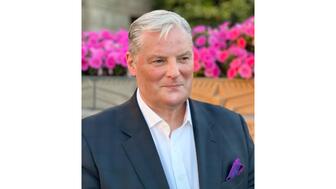The man was charged with theft, accused of ingesting the necklace while in a jewelry store in Auckland, New Zealand.
Squirrel Spotting: Who’s Driving the Bus in Your Business?
If it’s the jewelry store’s salespeople and not the owner, then you have a problem, Peter Smith writes.

Jim Collins’ book, “Good To Great,” made good use of the bus metaphor in describing how to build teams. Collins believed that getting the right people on the bus was essential to building great organizations. Who could argue with that rationale?
I was thinking about a different kind of bus metaphor recently as I flew back from JCK Las Vegas.
Not for the first time in my career, I had heard retailers wax poetic about what their people (salespeople) will and won’t sell. “Oh, I believe in it, but you know it really depends on our salespeople,” they’d say. “If we can get them behind it we could do remarkable things, but that’s easier said than done.”
Excuse me?
My mind wandered back to my hometown of Dublin, Ireland. I used to take the bus into town where I worked variously for Novel Jewelry and McGowans Jewellers, or all the way to the southside of the city when I worked for T.J. Reid & Co Wholesale Jewellers. Through all those bus rides, the bus drivers never once decided which route to take. Never. Ever.
The route was laid out for them and they drove the bus where they were supposed to drive the bus. CIÉ, the national transportation company, didn’t tell the divers to use their discretion, or to decide for themselves what route they should drive, or whether they would drive at all.
I never once heard a CIÉ spokesperson say, “You know, we’ve been trying to get Paddy to drive his bus that way, but it’s a tough ask. He likes to do his own thing.”
If you have decided that a given brand or product line is strategically important to your business and your salespeople feel differently, then one of two things needs to happen:
1. You need to do a better job articulating why you made that decision, what it portends for the health of your business, and what resources, time and effort you are willing to provide to help them negotiate any hang-ups they may have about that brand or product; or
2. You need to get new salespeople.
I admit that the second option seems a tad severe, but is it, given the retail landscape today?
A Changing of the Guard
I am hugely positive on retail and the facts don’t support the widely held and cynical view that we are in the middle of a retail apocalypse
Amazon is not acquiring and opening brick-and-mortar locations as a vanity project. They know what their future holds—a seamless integration of bricks and clicks.
The positive signs for brick and mortar, however, do not mean that the existing retail model is sound. For every Apple, Sephora, Tiffany and Ulta, there are large numbers of retailers closing their doors. We are witnessing not an apocalypse, but a changing of the guard in retail.
Apart from the above companies, look at what Untuckit, Warby Parker, Happy Feet, Eyebobs, Kendra Scott, Pandora, etc. are doing. They are thriving and fully committed to physical locations ongoing. But they are not opening the same kinds of retail stores that would have been opened 10 years ago, let alone 20 or 30 years ago.
The independent retail model needs to evolve in a major way or stores will continue to go out of business at a precipitous rate. Retail futurists like Doug Stephens have been screaming in books, blogs, TV and on stages all over the world that we must do a better job creating great experiences in retail. That doesn’t just mean we treat people well; that ought to be a given. What it does mean is that we need to create a visual and auditory experience that excites the senses of our customers.
It also means that we must do a better job with less, much less, and we need to have a very clear market position to current and prospective consumers about what we stand for. It means having a finite number of brand stories done well—stories that elevate our stores, not relegate them to an undifferentiated position based on perceived value. (You are not, and never will be, the cheapest … not for long anyway.)
“Less is more and higher quality all delivered in an engaging and exciting retail environment is, I believe, a recipe for success.”Stephens would argue that the retail continuum demands that we are either on the high end of the retail spectrum (see Starbucks, Tiffany, Apple, etc.) or we are on the lower end (price) of the continuum, competing with the likes of Amazon and Walmart.
I doubt there are too many retail jewelers who would argue that the latter place is a desirable market position, but the problem is that we are overloaded with retailers who live in the middle; they are neither clearly defined as quality product/experience/having a clear sense of self, nor competing solely on price. The middle is a dead zone. It is the place that makes the customers work too hard to figure what your store stands for and it is not a sustainable market position in the rapidly changing retail landscape.
There are fewer customers coming into most retail jewelry stores now than in years past (how often have you heard, “It’s not the ‘80s anymore!”). Therefore, unit sales are going to be down. (The Edge Retail Academy reports units are down 7 percent, rolling 12 months).
If there are fewer people visiting stores and unit sales are down, you can elect to invest additional resources trying to reverse that trend (possible, but not easily doable when marketing vehicles themselves are in a massive state of flux among traditional, digital, social media, etc.). Or, you can do a better job closing more sales and at a higher average ticket.
Increasing your average ticket is best accomplished by having products and brands that are differentiated and elevated beyond the mass of stuff that can historically be found in may retail jewelry stores.
Less is more and higher quality all delivered in an engaging and exciting retail environment is, I believe, a recipe for success.
Again, that middle place, where you have some quality brands/products jammed into overflowing cases alongside lots of “me-too” and undifferentiated products is a veritable death zone.
“Once you have made clear what your strategic direction is, it needs to be carved in stone. It cannot fail because your sales team decides it’s beyond them to embrace your evolving direction.”So, back to your salespeople.
I have always had great-salesperson envy. The very best of them are masters at what they do. They seem to have traits that are deeply rooted in their DNA.
The great ones should be consulted and included in discussions about the strategic direction of the business. They have a great perspective and they are best equipped to lead change by selling those higher price points.
Once you have made clear what your strategic direction is, it needs to be carved in stone. It cannot fail because your sales team decides it’s beyond them to embrace your evolving direction.
There is a great opportunity for retail jewelers to set a new direction and be very relevant in the vastly changing retail landscape. It will be hard work and it will require shedding old ideas and paradigms and, unfortunately from time to time, some old friends.
But we should not lose sight that against the backdrop of the thousands of retail jewelers who have closed in recent years, there are great indicators for brick-and-mortar retail. They are not often cited when we want to quote our own biases or blame factors beyond our control to explain shortcomings, but they are there, and they are real.
Whether we want to believe them, understand them and use them as fuel to reinvent our own models is entirely up to us.
Peter Smith is president of Vibhor, a public speaker and author of “Sell Something” and “Hiring Squirrels.” He spent 30 years building sales teams in retail and wholesale and he can be contacted at dublinsmith@yahoo.com, peter@vibhorgems.com, or on LinkedIn, Facebook or Twitter.
The Latest
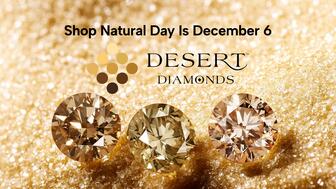
Sponsored by De Beers Group

The classic 5600 series G-Shock has been scaled down to about a tenth of its size, becoming a fully functioning watch ring.

How Jewelers of America’s 20 Under 40 are leading to ensure a brighter future for the jewelry industry.

The association’s annual conference and gala will take place Feb. 4, 2026, during the Tucson gem shows.


The January show will include a workshop for jewelry retailers on implementing AI to strengthen their businesses.
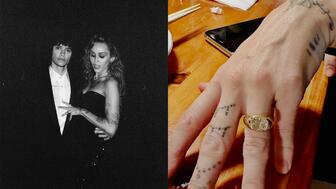
Fellow musician Maxx Morando proposed to the star with a chunky, cushion-cut diamond ring designed by Jacquie Aiche.

Roseco’s 704-page catalog showcases new lab-grown diamonds, findings, tools & more—available in print or interactive digital editions.

The retailer, which sells billions in fine jewelry and watches, is suing the Trump administration and U.S. Customs and Border Patrol.
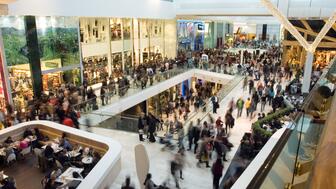
Black Friday is still the most popular shopping day over the five-day holiday weekend, as per the National Retail Federation’s survey.
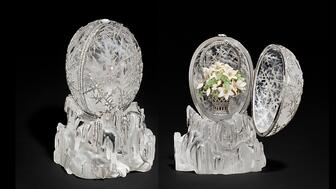
The historic egg, crafted for Russia's ruling family prior to the revolution, was the star of Christie’s recent auction of works by Fabergé.

The retailer offered more fashion jewelry priced under $1,000, including lab-grown diamond and men’s jewelry.

The eau de parfum is held in a fluted glass bottle that mirrors the decor of the brand’s atelier, and its cap is a nod to its “Sloan” ring.

Vivek Gadodia and Juan Kemp, who’ve been serving as interim co-CEOs since February, will continue to lead the diamond mining company.

In addition, a slate of new officers and trustees were appointed to the board.
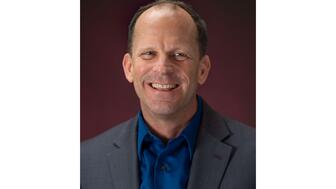
Laurs is the editor-in-chief of Gem-A’s The Journal of Gemmology and an expert on the formation of colored gemstone deposits.
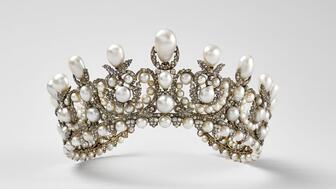
The man, who has a criminal history, is suspected of being the fourth member of the four-man crew that carried out the heist.
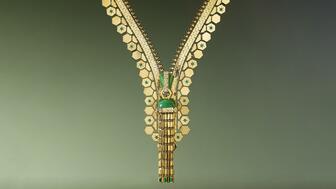
The single-owner collection includes one of the largest offerings of Verdura jewels ever to appear at auction, said Christie’s.
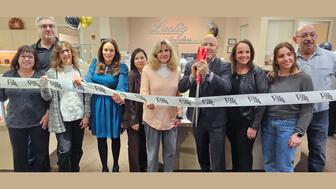
Michael Helfer has taken the reins, bringing together two historic Chicago jewelry names.

The guide features all-new platinum designs for the holiday season by brands like Harwell Godfrey, Ritani, and Suna.
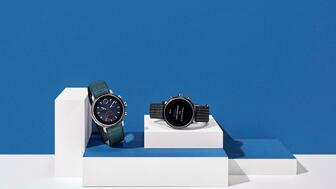
During its Q3 call, CEO Efraim Grinberg discussed the deal to lower tariffs on Swiss-made watches, watch market trends, and more.

Rosior’s high jewelry cocktail ring with orange sapphires and green diamonds is the perfect Thanksgiving accessory.

The “Embrace Your True Colors” campaign features jewels with a vibrant color palette and poetry by Grammy-nominated artist Aja Monet.

Luxury veteran Alejandro Cuellar has stepped into the role at the Italian fine jewelry brand.
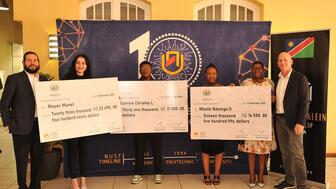
The company gave awards to four students at the Namibia University of Science & Technology, including one who is a Grandview Klein employee.
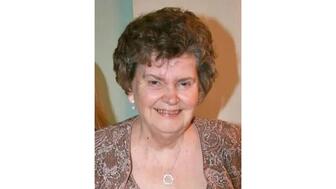
She is remembered as an artist who loved her craft and was devoted to her faith, her friends, and her family.

It joins the company’s other manufacturing facilities globally, including in India, Botswana, and Namibia.





